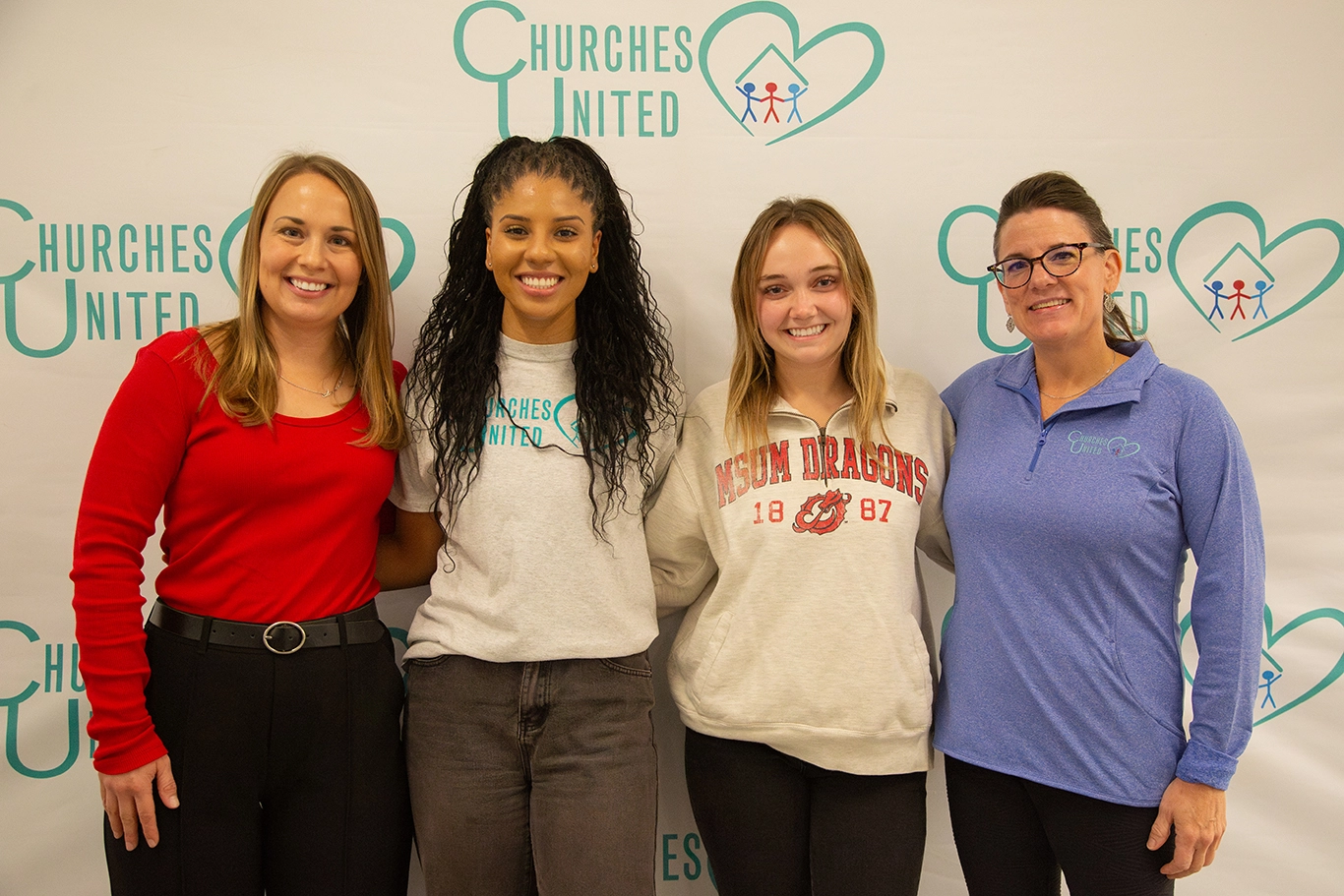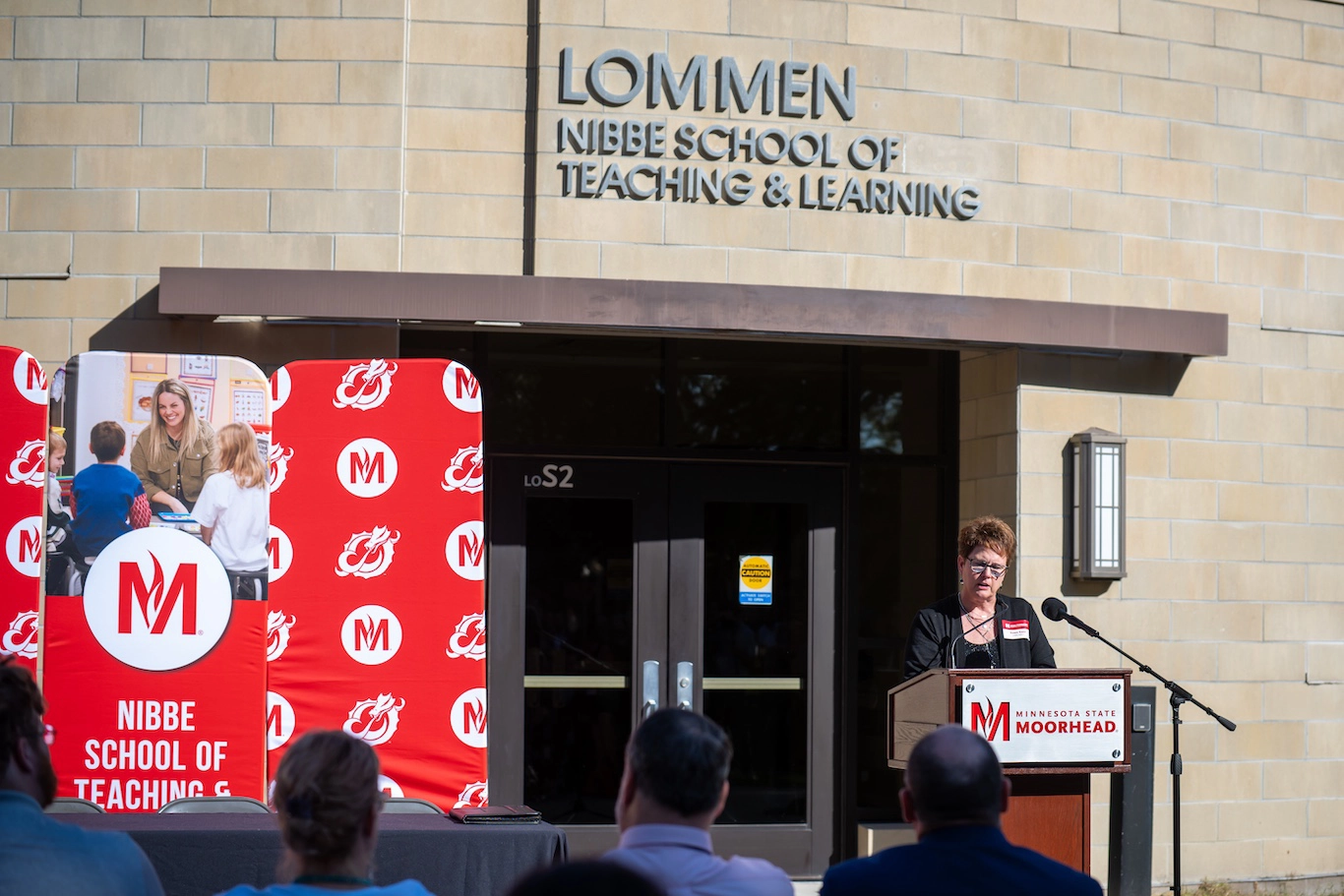Collaborative project prepares SLHS, special ed students for workplace
When it comes to students getting the best education for their future, collaboration plays a big part. Students putting their heads together for a project helps them get the real-world, hands-on experience they need to tackle challenges and connect with their future colleagues.
Students from Minnesota State University Moorhead’s special education and speech language hearing sciences (SLHS) departments teamed up this semester to develop an intervention plan for a simulation case. They then presented their collaborative class interprofessional education and practice projects.
This presentation was a collaboration between the SLHS 343 class taught by Rachel Stotts and Jill Beuckens and the SpEd 403 class taught by Shirley Johnson.

Pictured (left to right): Rachel Stotts, Shirley Johnson, Jill Beuckens
Special educators work closely with speech language pathologists in school settings. This project helped MSUM students work together to find the best intervention plan for a student to succeed.
“The overlap is natural in any school setting. Special educators will always connect with the work of speech language pathologists in schools,” Beuckens says.
The project consisted of a simulation case of a student who needed an intervention plan to improve their learning environment. Through this, students from each class brought in different knowledge on how to tackle academic as well as social skills. SLHS students looked at the case from the angle of how the student communicates and their comprehension skills, while the special education students explored how to engage the student in a classroom to get them to learn while accommodating a disability.
When the students first met, they didn’t understand the terminology or strategies the other departments used.
“The big problem in our department is our lingo. It isolates us from other educators,” special education student Caitlin Stingley says. “When collaborating with SLHS, it sounds like they have the same experiences we do but just on a different side. It’s nice to connect and see those similarities even with how different our work is.”
The faculty from each department understand how crucial it is for these future professions to connect now and learn how to cooperate in a school.
“The goal was for them to learn how important it is to collaborate with other professionals in order to meet the needs of each student’s disabilities,” Johnson says.
The learning experience didn’t stop there. On presentation day, students saw the different plans each group made and the different skills they focused on. Some groups even revised their plans after class to make changes.

Pictured: MSUM students Kailey (left) and Victoria (right)
“It felt like a nice learning environment and there was an area for growth. The pressure was taken off because we’re in the classroom,” SLHS student Victoria Proulx says.
Connecting departments in opportunities like this is an important way for students to be a step above in their careers. Being a team player is a crucial aspect to all work, especially education.
“Doing interprofessional groupwork is a great preliminary skillset to have before going into any job because you are going to be a part of a team,” Stotts says. “Being able to work with a team is a strong skill to have in the workforce.”
Make Sure Your Story Is Heard
Let us know how your life has been changed by being a Dragon: tell us your Minnesota State Moorhead story today!
Send Us Your Story


